Mechanisms of Pancreatic Injury Induced by Basic Amino Acids Differ Between L-Arginine, L-Ornithine, and L-Histidine
- PMID: 30697165
- PMCID: PMC6341295
- DOI: 10.3389/fphys.2018.01922
Mechanisms of Pancreatic Injury Induced by Basic Amino Acids Differ Between L-Arginine, L-Ornithine, and L-Histidine
Abstract
Pancreatic acinar cells require high rates of amino acid uptake for digestive enzyme synthesis, but excessive concentrations can trigger acute pancreatitis (AP) by mechanisms that are not well understood. We have used three basic natural amino acids L-arginine, L-ornithine, and L-histidine to determine mechanisms of amino acid-induced pancreatic injury and whether these are common to all three amino acids. Caffeine markedly inhibited necrotic cell death pathway activation in isolated pancreatic acinar cells induced by L-arginine, but not L-ornithine, whereas caffeine accelerated L-histidine-induced cell death. Both necroptosis inhibitors of RIPK1 and RIPK3 and a necroptosis activator/apoptosis inhibitor z-VAD increased cell death caused by L-histidine, but not L-arginine or L-ornithine. Cyclophilin D knock-out (Ppif-/-) significantly attenuated cell death induced by L-histidine, but not L-arginine, or L-ornithine. Allosteric modulators of calcium-sensing receptor (CaSR) and G-protein coupled receptor class C group 6 member A (GPRC6A) had inhibitory effects on cell death induced by L-arginine but not L-ornithine or L-histidine. We developed a novel amino acid-induced AP murine model with high doses of L-histidine and confirmed AP severity was significantly reduced in Ppif-/- vs. wild type mice. In L-arginine-induced AP neither Ppif-/-, caffeine, or allosteric modulators of CaSR or GPRC6A reduced pancreatic damage, even though CaSR inhibition with NPS-2143 significantly reduced pancreatic and systemic injury in caerulein-induced AP. These findings demonstrate marked differences in the mechanisms of pancreatic injury induced by different basic amino acids and suggest the lack of effect of treatments on L-arginine-induced AP may be due to conversion to L-ornithine in the urea cycle.
Keywords: G-protein coupled receptors class C; acute pancreatitis; amino acids; caffeine; cyclophilin D; mitochondria; necroptosis.
Figures
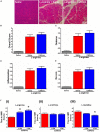
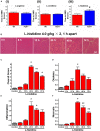
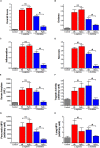
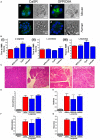
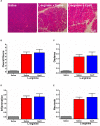
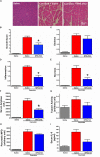
Similar articles
-
Robust GLP-1 secretion by basic L-amino acids does not require the GPRC6A receptor.Diabetes Obes Metab. 2017 Apr;19(4):599-603. doi: 10.1111/dom.12845. Epub 2017 Jan 19. Diabetes Obes Metab. 2017. PMID: 27943578
-
Endoplasmic reticulum stress promoted acinar cell necroptosis in acute pancreatitis through cathepsinB-mediated AP-1 activation.Front Immunol. 2022 Aug 19;13:968639. doi: 10.3389/fimmu.2022.968639. eCollection 2022. Front Immunol. 2022. PMID: 36059491 Free PMC article.
-
Mitochondrial Dysfunction, Through Impaired Autophagy, Leads to Endoplasmic Reticulum Stress, Deregulated Lipid Metabolism, and Pancreatitis in Animal Models.Gastroenterology. 2018 Feb;154(3):689-703. doi: 10.1053/j.gastro.2017.10.012. Epub 2017 Oct 23. Gastroenterology. 2018. PMID: 29074451 Free PMC article.
-
Recent advances in the investigation of pancreatic inflammation induced by large doses of basic amino acids in rodents.Lab Invest. 2014 Feb;94(2):138-49. doi: 10.1038/labinvest.2013.143. Epub 2013 Dec 23. Lab Invest. 2014. PMID: 24365745 Review.
-
Tolerable Upper Intake Level for Individual Amino Acids in Humans: A Narrative Review of Recent Clinical Studies.Adv Nutr. 2023 Jul;14(4):885-894. doi: 10.1016/j.advnut.2023.04.004. Epub 2023 Apr 14. Adv Nutr. 2023. PMID: 37062432 Free PMC article. Review.
Cited by
-
Profile of Pancreatic and Ileal Microbiota in Experimental Acute Pancreatitis.Microorganisms. 2023 Nov 4;11(11):2707. doi: 10.3390/microorganisms11112707. Microorganisms. 2023. PMID: 38004720 Free PMC article.
-
Transcriptomics and Network Pharmacology Reveal the Protective Effect of Chaiqin Chengqi Decoction on Obesity-Related Alcohol-Induced Acute Pancreatitis via Oxidative Stress and PI3K/Akt Signaling Pathway.Front Pharmacol. 2022 Jun 8;13:896523. doi: 10.3389/fphar.2022.896523. eCollection 2022. Front Pharmacol. 2022. PMID: 35754467 Free PMC article.
-
Loss of miR-29a/b1 promotes inflammation and fibrosis in acute pancreatitis.JCI Insight. 2021 Oct 8;6(19):e149539. doi: 10.1172/jci.insight.149539. JCI Insight. 2021. PMID: 34464354 Free PMC article.
-
Hesperidin Alleviates Acute Necrotizing Pancreatitis by Activating SIRT1 - Molecular Docking, Molecular Dynamics Simulation, and Experimental Validation.Comb Chem High Throughput Screen. 2024;27(12):1745-1757. doi: 10.2174/1386207326666230803140408. Comb Chem High Throughput Screen. 2024. PMID: 37534793
-
Icariin Promote Stem Cells Regeneration and Repair Acinar Cells in L-arginine / Radiation -Inducing Chronic Pancreatitis in Rats.Dose Response. 2020 Oct 30;18(4):1559325820970810. doi: 10.1177/1559325820970810. eCollection 2020 Oct-Dec. Dose Response. 2020. PMID: 33192204 Free PMC article.
References
-
- Armstrong J. A., Cash N. J., Ouyang Y., Morton J. C., Chvanov M., Latawiec D., et al. (2018). Oxidative stress alters mitochondrial bioenergetics and modifies pancreatic cell death independently of cyclophilin D, resulting in an apoptosis-to-necrosis shift. J. Biol. Chem. 293 8032–8047. 10.1074/jbc.RA118.003200 - DOI - PMC - PubMed
Grants and funding
LinkOut - more resources
Full Text Sources
Molecular Biology Databases
Miscellaneous

